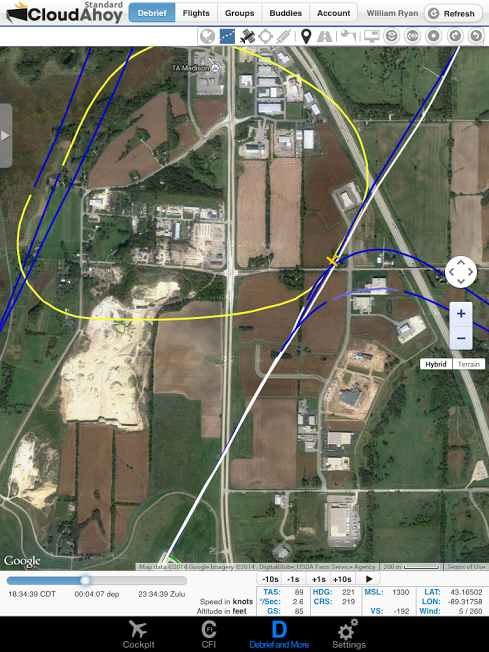This evening I was doing touch and goes in an Archer. I just got checked out in it last week, but wanted to get a few more laps in it with an experienced Piper driver to get a bit comfortable with the airplane, so I took an instructor.
We were doing right hand patterns off 21 at MSN. At one point I am a ways past the numbers, around the 45 degree mark. One notch of flaps in and slowed down a bit, descending. Here's the exchange as well as I can recall it...
Tower - Archer 62S, Challenger departing runway 21, base turn your discretion, traffic is a(forget but it was a twin Cessna of some sort) on a 5 mile final, runway 21 cleared touch and go, caution wake turbulence.
Me - Challenger in sight, turning base, clear touch and go, 62S
I didn't delay my base turn. Turned base, then final. On the PAPI, about 80 knots, starting to slow to 70.
I'm probably less than 1 mile final now:
Tower - Archer 62S, make a right turn to the east.
I'm not expecting this and to make matters worse, a right turn is to the west, not the east. So I ask for clarification on direction of the turn.
Tower - Archer 62S, turn to the West right now.
So I read it back, added full power and made a climbing right turn. My memory escapes me as to when I retracted the flaps, but at some point on re-entering base for the same runway I deployed them again.
Anyways nothing else was said except as I was on the "crosswind" and climbing, the tower told me to re-enter the right downwind for 21 and cleared touch and go.
The instructor asserted that the tower screwed up and mis-judged the situation but here is why I ask if I maybe share some blame:
When the tower said there was a twin on a 5 mile final and I could turn base(wasn't even on it yet), in the back of my head I thought that maybe was kind of close. I however figured that the tower had the separation figured out(apparently they didn't). So I "followed directions".
I'm wondering if I should have just offered to extend and let the twin pass off my right wing and then follow it in.
What say you guys? MSN is a class C airport so they do have radar.
Unfortunately there is no recording, looks like the Live ATC feed is down for that time period.


